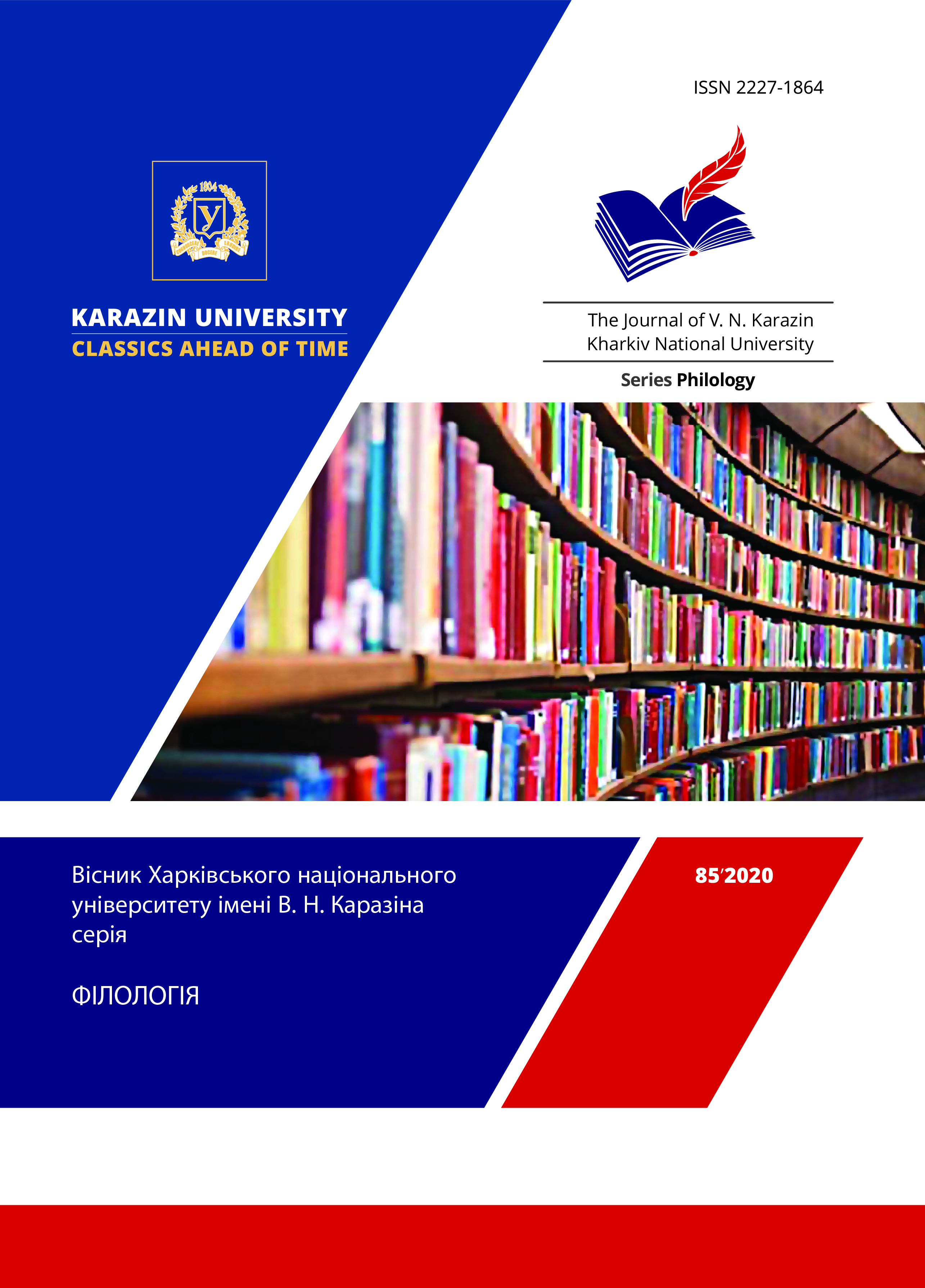Граматичні архаїзми у новолатинській поезії України ранньомодерного періоду: інваріантність форм та функцій
Анотація
У статті досліджується вживання граматичних архаїзмів у новолатинському поетичному тексті на матеріалі історичної поеми Симона Пекаліда De bello Ostrogiano (Краків, 1600), що послідовно відображає одну з найважливіших властивостей поетичного мовлення – реалізацію фонетико-граматичних та лексико-словотвірних можливостей мовної системи і наочно показує динамічний характер мовних елементів на усіх рівнях латинської мови. Визначається, що основними чинниками, які вплинули на вживання граматичних архаїзмів, були метричні вимоги та стилістичні канони античного епосу.
Ранньомодерна латинська мова, яка мала гнучку мовну систему зі збереженою від класичної латини граматичною основою, у силу тих функцій, які вона виконувала у поетичній сфері, характеризувалася значною варіантністю мовної структури, зумовленою наявністю елементів різночасового походження. Належна до пасивного словникового запасу мови архаїчна лексика у більшості випадків була стилістично маркованою і нерідко переходила в розряд традиційно-поетичної. Традиція епічного жанру та стилістична диференціація різних варіантів мовлення передбачала наявність у епічному тексті певної кількості архаїчних морфологічних форм, внаслідок чого в латинській мові виникла стилістична диференціація флексій-дублетів, один з яких був архаїчним.
Функціонування архаїчних форм у новолатинському поетичному тексті має подвійний характер: як мовна одиниця архаїзми займають своє особливе місце в межах синхронічних відношень, але як стилістична одиниця вони декодуються згідно з другою, більш ранньою системою літературної мови. Використання різночасових морфологічних форм пов’язане з їх поетичною функцією у мові, яка упродовж віків поступово виробляла певні стилістичні норми у вживанні граматичних форм.
Завантаження
Посилання
Deryugin, A. A. (1967). Iz nablyudeniy nad leksikoy latinskogo poeticheskogo yazyka [On observations of the vocabulary of the Latin poetic language]. Yazyk i obshchestvo [Language and society]. Saratov: Saratov University Publ., pp. 244–251. [in Russian]
Koshchiy, O. (2017). Ukrainskaya neolatinistika: dostizheniya i perspektivy [Neo-Latin studies in Ukraine: achievements and prospects]. The Sixth International Congress of Belarusian Studies. Working Papers. Vol. 6 (2017). Kaunas: Vytautas Magnus University Press, pp. 134–138. URL: http://palityka.org/wp-content/uploads/2017/09/07-04_Koschii.pdf [in Russian]
Malinauskene, N. K. (2006). Vvedenie v istoriyu latinskogo yazyka: Klassicheskiy period [Introduction to the history of the Latin language: Classical period]. Moskow: Greko-latinskiy kabinet Yu. Shichalina. [in Russian]
Myronova, V. M., Hrytsenko, S. P., Korolova, N. V., Kositska, O. M., Koshchii, O. M., Shcherbyna, R. A. (2014). Latynska mova v Ukraini XV – pochatku XVIII stolittia [Latin in Ukraine XV – the beginning of the XVIII century]. Kyiv: Kyiv University Publ. [in Ukranian]
Riffaterre, M. (1980). Kriterii stilisticheskogo analiza [Criteria for stylistic analysis]. Novoe v zarubezhnoy lingvistike [New in Foreign Linguistics]. Issue IX: Lingvostilistika [Linguistic stylistics]. Moskow: Progress, pp. 69–97. [in Russian]
Semchynskyi, S. V. (1996). Zahalne movoznavstvo [General Linguistics]. 2d ed. Kyiv: AT «OKO». [in Ukranian]
Smyshlyaeva, V. P. (2001). Yazykovye urovni rimskogo geksametricheskogo zhanra [Language levels of the Roman hexametric genre]. Drevnie yazyki v sisteme universitetskogo obrazovaniya. Issledovanie i prepodavanie [Ancient languages in the system of university education. Research and teaching]. Moskow: Moskow University Publ., pp. 283–289. [in Russian]
Tronskiy, I. M. (1953). Ocherki iz istorii latinskogo yazyka [Essays from the history of the Latin language]. Moskow-Leningrad: AN SSSR Publ. [in Russian]
Cherniukh, B. V. (2008). Istorychna hramatyka latynskoi movy [Historical grammar of the Latin language]. Lviv: Lviv University Publ. [in Ukranian]
Ernout, A. (2004). Istoricheskaya morfologiya latinskogo yazyka [Historical morphology of the Latin language]. 2d ed. Moskow: Editorial URSS Publ. [in Russian]
Yakovenko, N. (2002). Shcho za viinu opysuie Shymon Pekalid u poemi «De bello Ostrogiano» [What a war describes Simon Pekalid in the poem De bello Ostrogiano]. Paralelnyi svit. Doslidzhennia z istorii uiavlen ta idei v Ukraini XIV–XVII st. [The parallel World. Research on the History of Conceptions and Ideas in Ukraine XIV – XVII centuries]. / N. Yakovenko. Kyiv: Krytyka. pp. 157–188. [in Ukranian]
Mayer, R., & Adams, J. N. (1999). Aspects of the language of Latin poetry. Oxford: Oxford University Press.
Bartók I. (2005). Companion to the history of the neo-latin studies in Hungary. Budapest: Universitas Publ. House.
Pękala Sz. (1600). De bello Ostrogiano ad Piantcos cum Nisoviis: libri quattvor. Cracoviae: In Officina Andreae Petricouij.
Myronova, V., Hrycenko, S., Korolova, N., Kosicka, O., Koščij, O., Lastovec, M., & Ščerbyna, R. (2019). Latin in the multilingual space of Ukraine in the 15th-18th centuries: monograph. Brno: Galium.
Nechutová J. (2002). Středověká latina. Praha: Koniasch Latin Press.
Stotz, P. (1996). Handbuch zur lateinischen Sprache des Mittelalters. 5 Bde. 3 Bd. München: Beck.
Weyssenhoff-Brożkowa Krystyna. (1998). Studia nad łaciną średniowieczną w Polsce. Warszawa: OBTA.




